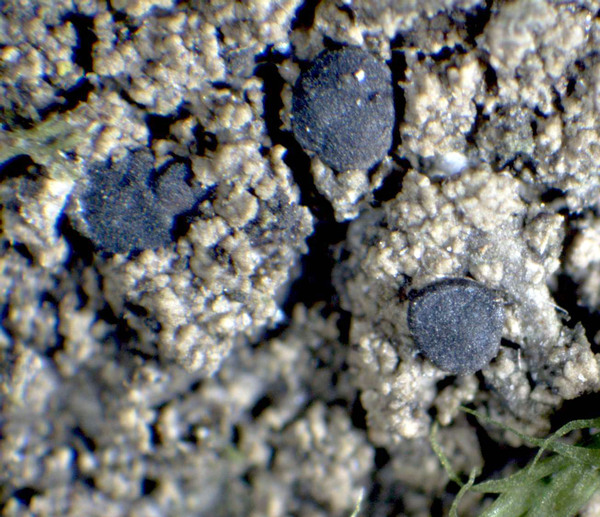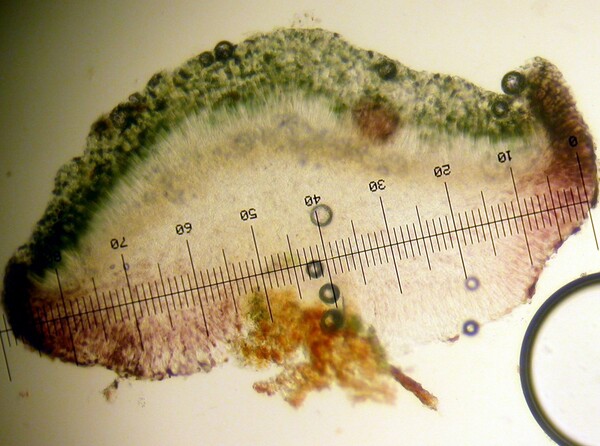Scutula circumspecta (Vain.) Kistenich, Timdal, Bendiksby & S.Ekman
Taxon, 67: 895, 2018.. Basionym: Lecidea bacillifera var. circumspecta Nyl. ex Vain. - Meddeland. Soc. Fauna Fl. Fenn., 10: 22, 1883.
Synonyms: Bacidia circumspecta (Vain.) Malme; Bacidia quercicola (Nyl.) Vain.; Lecidea circumspecta (Vain.) Hedl.
Distribution: N - VG (Carvalho 1997), Ven (Nascimbene & al. 2021), TAA (Nascimbene & al. 2014, Nascimbene 2014), Lomb, Piem (LD-1186673), Emil (Fariselli & al. 2020), Lig (Giordani & al. 2025). C - Marc (Nimis & Tretiach 1999), Tosc, Umb (Ravera 1999, Ravera & al. 2006), Laz (Ravera & al. 1999, 2000, 2002, Munzi & al. 2007), Mol (Ravera & al. 2010, Ravera & Genovesi 2012), Sar (Herb. Nascimbene 4386). S - Camp (Brunialti & al. 2013, Ravera & Brunialti 2013), Pugl (Thüs & Licht 2006), Cal (Puntillo 1998, Puntillo & Puntillo 2004), Si (Nimis & al. 1994, Campisi & al. 2020).
Description: Thallus crustose, continuous, cracked, or of discrete to contiguous, usually convex areoles, whitish, pale grey-green or pale grey-brown. Apothecia lecideine, black, 0.2-1 mm across, with a flat to finally weakly convex disc and an often glossy proper margin. Proper exciple 20-70 µm wide laterally, without crystals, dark purple-brown, K+ intensifying purple in upper part and along the rim, colourless or pale-pigmented within; epithecium blue-green to olive-green, rarely partly purplish brown, with a blue-green (K-, N+ purple, often with blue crystals) and a purplish brown (K+ purple, N+ orange) pigment in various amounts, the former usually prevalent; hymenium colourless, 45-55(-70) µm high; paraphyses simple or forked in upper part, 0.8-1.6 µm thick at mid-level, the apical cells swollen, up to 5 µm wide; hypothecium colourless or pale yellowish brown in upper part. Asci 8-spored, clavate, with an amyloid tholus and diffuse non-amyloid apical cushion, and an outer amyloid wall layer. Ascospores 3-7(-9)-septate, bacilliform to thread-like, straight, (15-)20-35(-45) x (1.5-)2-2.5(-3) µm. Pycnidia half-immersed to almost sessile, bluish or black, the wall with both purple-brown and green pigments. Conidia oblong-cylindrical, 0-1-septate, 7-9 x 1.5-2 µm. Photobiont chlorococcoid, the cells 7-14(-16) µm wide. Spot tests: thallus K-, C-, KC-, P-, UV-. Chemistry: thallus without lichen substances.
Note: a mild-temperate lichen found on old trees in open, humid woodlands below the subalpine belt, more rarely on primarily acid, but nutrient-enriched bark.
Growth form: Crustose
Substrata: bark
Photobiont: green algae other than Trentepohlia
Reproductive strategy: mainly sexual
Commonnes-rarity: (info)
Alpine belt: absent
Subalpine belt: absent
Oromediterranean belt: absent
Montane belt: very rare
Submediterranean belt: very rare
Padanian area: absent
Humid submediterranean belt: rare
Humid mediterranean belt: very rare
Dry mediterranean belt: absent

Predictive model
Herbarium samples
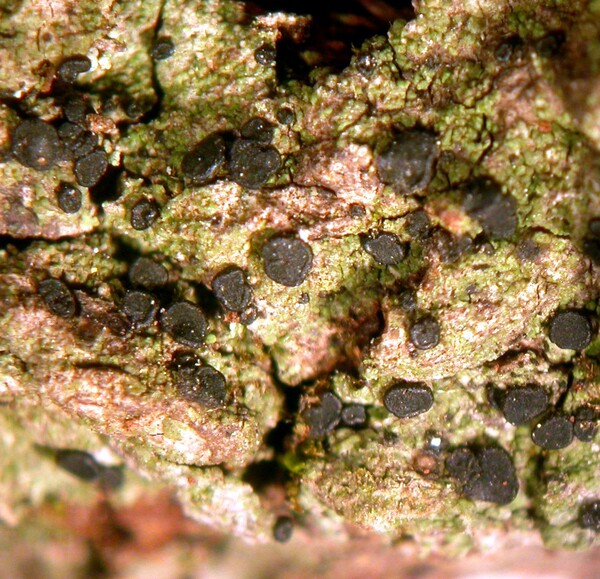

Juri Nascimbene - CC BY-SA 4.0; Owner: ITALIC - Dyades Project - Dept. of Life Sciences, University of Trieste
Italy, Sardinia
2014
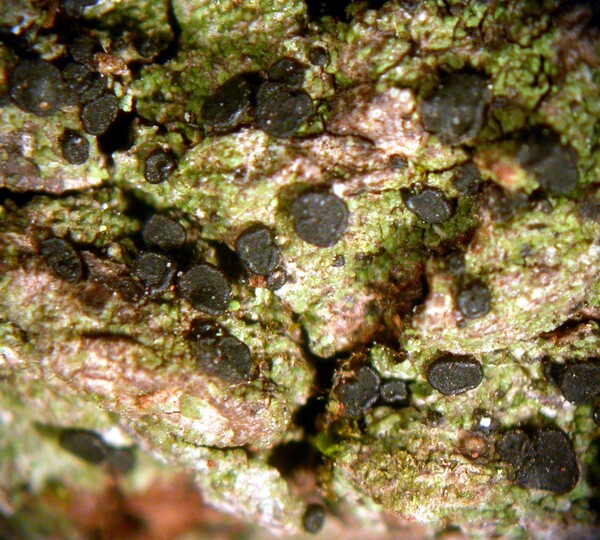

Juri Nascimbene - CC BY-SA 4.0; Owner: ITALIC - Dyades Project - Dept. of Life Sciences, University of Trieste
Italy, Sardinia
2014
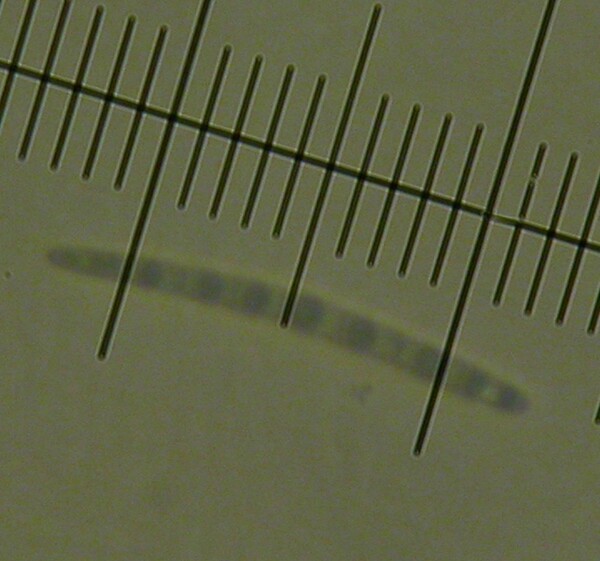

Juri Nascimbene - CC BY-SA 4.0; Owner: ITALIC - Dyades Project - Dept. of Life Sciences, University of Trieste
Italy, Sardinia
2014
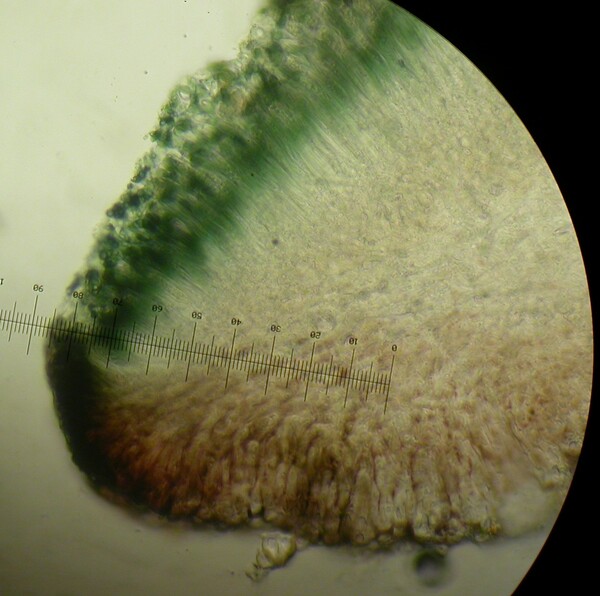

Juri Nascimbene - CC BY-SA 4.0; Owner: ITALIC - Dyades Project - Dept. of Life Sciences, University of Trieste
Italy, Sardinia
2014
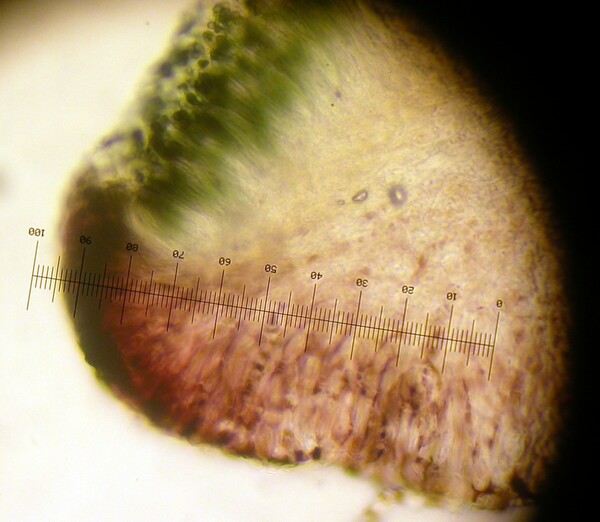

Juri Nascimbene - CC BY-SA 4.0; Owner: ITALIC - Dyades Project - Dept. of Life Sciences, University of Trieste
Italy, Sardinia
2014
Growth form: Crustose
Substrata: bark
Photobiont: green algae other than Trentepohlia
Reproductive strategy: mainly sexual
Commonnes-rarity: (info)
Alpine belt: absent
Subalpine belt: absent
Oromediterranean belt: absent
Montane belt: very rare
Submediterranean belt: very rare
Padanian area: absent
Humid submediterranean belt: rare
Humid mediterranean belt: very rare
Dry mediterranean belt: absent

Predictive model
| Herbarium samples |


Juri Nascimbene - CC BY-SA 4.0; Owner: ITALIC - Dyades Project - Dept. of Life Sciences, University of Trieste
Italy, Sardinia
2014


Juri Nascimbene - CC BY-SA 4.0; Owner: ITALIC - Dyades Project - Dept. of Life Sciences, University of Trieste
Italy, Sardinia
2014


Juri Nascimbene - CC BY-SA 4.0; Owner: ITALIC - Dyades Project - Dept. of Life Sciences, University of Trieste
Italy, Sardinia
2014


Juri Nascimbene - CC BY-SA 4.0; Owner: ITALIC - Dyades Project - Dept. of Life Sciences, University of Trieste
Italy, Sardinia
2014


 INDEX FUNGORUM
INDEX FUNGORUM
 GBIF
GBIF
 DOLICHENS
DOLICHENS
